Tag: letting go
Sometimes life sucks and then it gets better
 Sometimes life sucks. Stuff happens. You’re stressed out. Don’t feel like your normal self. Aren’t up to doing all the things you used to do.
Sometimes life sucks. Stuff happens. You’re stressed out. Don’t feel like your normal self. Aren’t up to doing all the things you used to do.
It could be for any or multiple reasons, right? We’ve all been there.
I’m there.
I like keeping my private matters private, so I’m leaving the details out. Thanks for understanding and not asking about it!
And anyway, I don’t want to talk about the details. I want to talk about how I’m handling it.
I’m prioritizing my health and wellbeing, the people I care about, and doing the very best I can for my clients.
So how is that going?
Well, business is great. The people I interact with from day to day are the best I could ask for, and I like my job every single day. So that’s good!
I am focused on doing great work for my clients. I am not, however, taking on much new work, finishing my book, or posting my blog every Thursday (thanks for noticing, by the way). Payroll and taxes are on track but my QuickBooks is more than a little out of date. I’m not up for all of it right now, and would rather focus on the most important stuff and do the rest when I can.
My health and wellbeing and the people I care about are up and down. Good days, bad days, fun days, sad days. I haven’t been to yoga in over two weeks, but went dancing and golfing for the first time in eight or nine months. I’m reaching out to my friends and family when I need support. But I’m not being a great friend to all of the people that matter to me because I don’t have the energy for it. I try to let them know I care and be there when it counts the most.
The negative stuff is temporary. I’m looking forward to getting past it and excited for the future. Overall life is good, I’m fortunate, and I know it. Grateful.
People say “be gentle with yourself” when you’re going through a rough time. Well, yes, but what does that mean exactly? For me it means I know my priorities and that’s what I’m focused on. I’m doing the best I can with what I’ve got.
I hope you are doing great. And if you’re not, I hope you’re also focusing on the most important things and letting the rest go until you’re ready for it.
Because Life’s a Bittersweet Symphony and sometimes you gotta just Shake it Off.
Hard Lessons
These are lessons I didn’t want to learn. If the tradeoff was having Milo with me or knowing what I know now? I’d pick my cat. Of course I would.
But life doesn’t work that way, so I figure that the only thing worse that losing him would be to not learn anything from it.
The first lesson came when my cat started showing symptoms that were later diagnosed as thyroid disease and lymphoma. I fell apart every day. Sometimes multiple times in a day. By falling apart I mean crying, and moments where my energy drained out of me and all I wanted to do was lay down.
Then I decided that I didn’t want to live like that anymore. With chemotherapy and his other medicines, it was possible that he would have lived for up to three more years and I didn’t want to be depressed that entire time. I made a choice not to make his illness the center of my life. I had a book to finish, relationships to care for and work to do. When he died, that choice became not making his death the center of my life.
The second lesson I learned is that I can control my thoughts. We hear a lot about this – the power of positive thinking, we create our own realities, blah blah. At different times in my life I have tried to consciously choose my thoughts but it wasn’t that effective. I also had some scorn about people trying to brainwash themselves into believing they were better off than they actually were. It seemed unauthentic.
Soon after Milo died, I felt a tremendous sense of guilt and regret. Not about euthanasia at the end. I regretted that I hadn’t rushed him to the ER sooner after he started going downhill the last time. He stopped eating and drinking and I waited, thinking about how stressful the hospital was and how much he hated it. I waited, wondering if would be better to let him die at home than put him through more intervention. I waited, asking myself how many times we were going to do this. Then the decision got past me, and by the time I took him to get fluids, it was a hospice mission.
After he was gone, I wished I could go back in time and make a different choice. I kept thinking, “if only I had taken him to the hospital sooner, would he still be alive?” These thoughts were so painful that I had to stop them. I realized that they didn’t serve me – they only caused me to suffer, and they didn’t honor Milo’s life. I made myself acknowledge that there is no way of knowing if he would have lived longer, and that thinking I made the wrong choices was just one story. Another story is that I did the right thing. Possibly more treatment would have been worse for him, or he might have died there, in the place he hated, away from me.
The “if only” thoughts still came, but when they did, I forcibly stopped them. As soon as I caught myself, I would think, “NO!” And then tell myself, “I choose to believe the possibility that I made the right choices.” At first this scenario played out repeatedly. After a while, less so.
The third lesson was that the support I received taught me how to support others in grief. One friend called me the evening that Milo passed away, and just listened. She invited me to go out the next night, and getting out and doing something helped. Another friend came to my house the next day with a plant, and the formalness of it made me feel like we were memorializing Milo. Receiving cards and reading messages from people on Facebook also helped.
In the past, I wasn’t always one to reach out when someone else experienced a loss. I might have been unsure if making contact was welcome. What if they wanted to be alone with their grief? Or I felt unsure of what to say and then didn’t reach out at all. After being comforted by other people’s gestures, I decided that even if I didn’t know what that person wanted, it is better to send an email, a text or make a phone call than not.
The last lesson I’ve learned is to look for support and comfort. Besides accepting help from my friends and family, I took action on my own. I read articles online about grieving animal companions, and found a weekly candle lighting ceremony at www.petloss.com. Each Monday, people across the globe gather online to read a prayer for our animals and light candles to honor them. When the ceremony isn’t taking place, people can use the chat room to seek support from each other.
A few days ago, a blog that I subscribe to included a post called Moving Beyond the Pain of Losing Someone You Love. The author, Karen Lang, wrote about the tragic loss of her son and how for a period of time she doubted the choices she made at the end of his life and was consumed with wondering “what if”. Although our losses are different, she expressed what I had been feeling and that was reassuring.
I also happened to get an email with a link to a podcast that featured Christina Rasmussen, who wrote a book called Second Firsts: Live, Laugh, and Love Again. Normally I have no patience for podcasts, but I listened to this one twice. She uses science to support her theories and talked about the importance of giving ourselves time to rest and recover when we’re hurt: she calls this “the waiting room”.
No matter what I have going on in my life, I feel self-imposed pressure to complete my self-imposed deadlines for work and writing. When I take breaks or try to get extra rest, I often wind up feeling more anxious instead of energized. Rasmussen’s message pointed out that allowing myself downtime is more helpful than slogging through my to-do list.
None of these lessons are worth what I lost. But they’re better than not learning anything at all.
Breakup Songs for Cats
I was listening to a This American Life podcast one August evening this summer. The topic was breakups.
It made me think about a particularly bad breakup that took place in August years ago. And then – ugh, I put it out of my mind because while I’m happy with my life and grateful for the way things turned out, at the time it was devastating. There’s no need to dredge up old pain.
After the podcast ended, I went to the kitchen to get a glass of water and check on Milo. I saw him lying under a chair, a pile of fur. He didn’t even look like a cat. Just a mess of puffed up, black cat hair. When I stepped back into the living room he was sitting up, watching me.
I whispered, “I’m coming to get you,” and starting walking towards him slowly with big, exaggerated steps and my arms up like Frankenstein. I paused, “I’m going to kiss your head,” then moved closer. When I was four feet away, I could hear him purr. I started crying, but kept going until I smooched his head anyway.
It made me think there’s something missing in the genre of songs about the loss of love. I haven’t heard any about the loss of a pet. The pain is deep and aching, and is something that so many of us go through. So why not?
One segment of the podcast was about a woman who was so immersed in breakup songs that she wrote and recorded one of her own to help deal with her loss. Much of the sentiment in songs about broken love touch into the same heartache over the thought of losing Milo. There’s disbelief and aching sadness. There’s a flood of memories. There’s a feeling that a very real piece of me is being cut away. The worst feeling is the one that hits me when I go about my day and suddenly remember that he’s sick, and that someday, even if he made it through this illness, he’s going to die. That remembering – it’s a sudden shock that pounces on me, over and over.
Life changes so quickly. One thing I could count on was that every time I walked through my front door, Milo would be home, waiting for me. When I was grieving the deaths of family members or the endings of relationships, he was a consistent source of comfort. Through the upheaval of quitting my job and the neurosis of writing a book and the ups and downs of starting a business, he has been there. For nearly twelve years, Milo has been there.
I told him, “Don’t leave me. I need you.”
He’d been sick since the end of June, vomiting and not eating much, and dropped from an already tiny ten pounds down to seven. In July, he had to stay the night at the hospital for the first time. It was after 11PM when I went home without him, walked into my house and noticed all the markers of his life there. His food bowl, scratching post, toys. Cat hair on the edge of my blanket.
I got up early the next day to drive to the hospital to check on him. He was much better. He was alert and busy checking out the exam room. He ate some food and tried to scratch the cabinets and the seat covers. I stopped him, but appreciated his willfulness. He kept a wary eye on the door.
Once home, he would get better and then he would get worse. He was diagnosed with lymphoma in the intestines. His twice daily medicines were adjusted. We grew to hate the many trips to the hospital, although I’m grateful for their care. The good days went by so quickly. The bad ones stretched out painfully.
A couple of weeks ago, he lay next to me on the couch, his back against my stomach. This is my favorite way to sit close together, but not his, so whenever he curled up next to me I held onto the moment as long as I could.
Some web sites say indoor cats average 12 – 18 years. My vet used to say he could live into his twenties and that is what I’ve expected. Twelve is not long enough.
The prognosis for his cancer is up to three years. My attitude changed. I’ll take three more years. Three more years is great. Please give me three more years.
I want a love song for my cat. And for all the brokenhearted women and men like me. Where’s our song about knowing he’s going to leave and not wanting to accept it? Where’s the song for after he’s gone, when all that’s left are the tufts of fur in the corners of the room?
Milo passed away on Friday with the help of our home vet. In his last few days he stopped making his adorable meow-els, but he gave me one last purr as we said goodbye.
It was a life well lived. A life well loved.
Letting Go of Treasures
I tell people that after my grandparents died they came to live with me. My grandmother passed away in September of 2011, and my grandfather a few months later. I had a special connection with each of them and “sad” doesn’t begin to describe how I felt when they were gone.
The grieving process was long.
Managing their affairs was complicated.
My father and aunt had already passed away and so my grandparents entrusted me to manage the “death responsibilities,” as I call them. “Managing an estate” sounds like something a New York banker does for his millionaire clients. Death responsibilities are not glamorous. They included combing through files to locate every utility to change into my name until the house could be sold. They included cancelling subscriptions to magazines and newsletters.
Death responsibilities included standing in the middle of a home full of vases, record albums, tables, chairs, and boxes of dolls and doilies and wall hangings. Taking inventory, stacking boxes for the Goodwill, and bagging up load after load of half-empty bottles of aspirin, bug spray and chipped flower pots to take to the dump.
It was overwhelming.
It was heartbreaking.
My grandparents moved many times throughout their lives. My grandma started on a farm in North Dakota and her adventurous spirit took her to Washington, Hawaii, California, and finally to Oregon, with a brief experiment in Arizona along the way. My grandfather, who is actually my step-grandfather, also lived in many different places during his military career and then was along for the ride with my grandmother.
Each time they moved they brought all their old stuff with them and acquired new things. Each new house seemed to have more cupboards, more closets, more garage space. They weren’t hoarders. Their homes didn’t have stacks of papers or piles of stuff strewn everywhere; their possession were neatly stored. They just had a lifetime worth of belongings stuffed into every available space.
They cherished their belongings for the memories, and also held onto things out of a desire not to waste. They both had grown up in circumstances that required thrift.
Their belongings weren’t especially valuable. They were just plentiful. I took an entire trunk worth of jewelry to be cataloged and appraised, and dutifully wrote down “$0” next to each item’s listing as the jeweler told me “Costume jewelry, no value” over and over. It is true that most of the baubles were not made of precious metals or stones. From an estate inventory point of view, they were not worth anything. But they meant something to my grandma. They were gifts or handed down from her mother or purchased with her hard earned money. And because of that, they are worth something to me, too.
The last piece of jewelry that she received was a gift from me. Knowing her love for big, opulent pieces, I picked out a Stella and Dot ring with a swollen cluster of faux pearls, and brought it with me on one of my visits to see her. She was happy.
For a while I wore my grandmother’s jewelry every day. I set about ten of her necklaces and rings in my own jewelry box. But there is too much of it, an overwhelming amount, and the rest of it is hidden deep in a closet. Someday I will go through it again and decide what I truly want to wear and keep. And the rest of it…the tattered bracelets and faux diamond rings…I guess they will go to the Goodwill.
My grandmother had distinct taste. I loved that about her. And now I have what may be the world’s only brass chandelier painted over in a color best described as a cross between a muted turquoise and powder blue. I also have the leopard print chairs that she bought for her lanai when she lived in Honolulu. I have a photo of my dad sitting on one of those chairs during an R&R break from Vietnam.
Knowing how much they valued their possessions made it difficult to get rid of them. My relatives took some objects – paintings, a chair, a lamp, the computer, photos. I took the most belongings, a small trailer’s worth.
My grandfather had a silhouette painting on his bookshelf. Inscribed on the back was “From Daniel to Nana on Mother’s Day, May 1939.” If he had kept this treasure for 75 years, how could I give it away now? I have mixed feelings. I don’t want to be the keeper of the family heirlooms. Yet I feel obligated to keep these things.
My preference is to have minimal stuff. I don’t like having a lot of decorations in my home. I can’t stand visual clutter. The words “knick-knack” and “trinket” bother me.
I wanted my grandparents with me. After they passed away, the closest thing to having them with me was to surround myself with their belongings. My living room now has more objects that belonged to my grandparents than anything I acquired on my own.
It has been three years since they died. I’ve begun to think it is time for my grandparents to move out. My minimalist tendencies are getting stronger along with the desire to reflect my own style instead of living in a shrine.
One piece of furniture that I inherited is my grandfather’s armoire. It has four shelves and a glass door that locks with a key. That is plenty of room for his silhouette painting, his baby shoes and framed photos. It’s big enough to hold their memories. I can unlock it when I want to visit the past. Maybe I can let the rest go.
I Sold My Car But Not My Dream
I sold m y car last week. My shiny red Dodge Challenger that showed up when I quit my job.
y car last week. My shiny red Dodge Challenger that showed up when I quit my job.
After I quit, I drove this car down Washington State and across the corners of Oregon and Idaho, and all the way down Utah where I volunteered at the Best Friends Animal Society in Kanab for a few days. Then I drove up through Bryce Canyon and into Colorado to spend a magical month as a writing student in Boulder. When the month was over, I drove up through Wyoming and across Montana and Idaho, back to my home in Washington.
Each day when I got in my car for the next leg of my road trip, I started a playlist that I made for the journey. The first song was the theme from The Dukes of Hazard. “Straightenin’ the curves/ Flatnin’ the hills”….and neither the mountain nor the law got me in that car…not a single ticket or scrape. That car was with me on the best adventure of my life.
The Challenger symbolized the freedom and empowerment I felt when I quit my corporate job. It represented doing what I wanted to do, not what anyone else thought I should do. It was about making a choice not because it was practical but because it added fun and excitement to my life.
In the book I’m writing, I do not recommend quitting your job and then buying a new car! But I had enough savings to afford it and it was an acknowledgement of the confidence I felt. I believed in myself enough to quit my regular paycheck and go out on my own, knowing that I would be fine. My attitude was about saying yes to the possibilities.
It was so much fun to drive the Challenger on freeways and the open roads across the West. It was les s fun to drive in the cramped streets of Seattle, or to navigate around tight corners in parking garages. Challengers are wide cars with long hoods. This car didn’t fit in my garage at home and stayed in the driveway.
s fun to drive in the cramped streets of Seattle, or to navigate around tight corners in parking garages. Challengers are wide cars with long hoods. This car didn’t fit in my garage at home and stayed in the driveway.
In the summer and fall it was still more fun than frustrating. My schedule was wide open and I didn’t drive anywhere on most days. When I did, I could take extra time to find parking spots. Then I started a new consulting gig in January and suddenly needed to be at an office most mornings.
With the winter weather, I had to defrost the car to drive it to the office while my all wheel drive Subaru with its heated seats and rear windshield wipers was blocked behind it in the garage. I kept the Subaru when I bought the Challenger, expecting that it was going to be temporary. I didn’t like owning two cars; it clashed with my values of living more simply and with less consumption.
When the downsides outweighed the positive, I went to the AutoTrader website to evaluate how much the car was worth and found an option to get a price quote from local dealers who buy used cars. I plugged in the details and got an offer that was $900 less than what I purchased the car for back in June. I could take it to the dealership and skip the hassle of placing an ad, meeting people for test drives, and negotiating. It was so simple that I took it as a sign that it was time to let the Challenger go.
Last week I said good bye to the car. I felt like I was taking a beloved pet to find a new home. I had to remind myself that my best memories were from driving the car out to Boulder and back this summer, and that the car was a symbol of living more purposefully. It wasn’t actually freedom itself. I can still make empowering choices that make my life bigger and better.
bye to the car. I felt like I was taking a beloved pet to find a new home. I had to remind myself that my best memories were from driving the car out to Boulder and back this summer, and that the car was a symbol of living more purposefully. It wasn’t actually freedom itself. I can still make empowering choices that make my life bigger and better.
That car represented leaving old crap behind to start a new life, and doing something that was impractical but fun and just for me. I’m so glad I had that experience. And I’m glad I realize I don’t have to keep the car to continue to leave old crap behind, start new adventures, and do things just because they make life more fun.

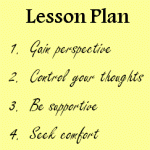
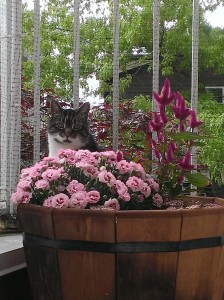

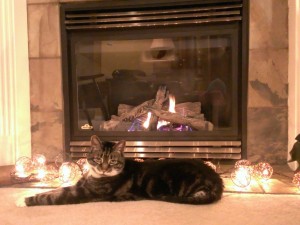
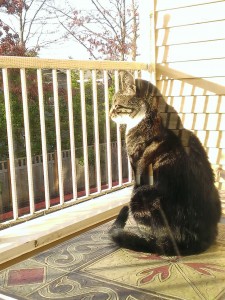
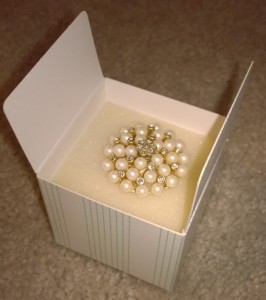

Recent Comments